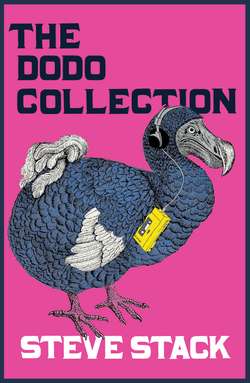Читать книгу The Dodo Collection - Steve Stack - Страница 42
ОглавлениеRing Pulls
For decades, the holy trinity of pavement litter was cigarette butts, blackened wads of chewing gum, and drink can ring pulls. Since 1989, these have been reduced to a double act only.
Younger readers, by which I mean anyone under the age of about 30 (most of whom won’t be reading this book anyway), may be unaware that the ring pulls on beverage cans – Coke, Fanta, whatever – used to come right off the can.
That’s right, clean off.
They were usually thrown away, often in complete disregard of the little stick man next to a wire bin who wanted us to Keep Britain Tidy, and were a common sight on pavements and kerbsides everywhere.
This removable ring pull, or pull tab, was invented in 1963 by a man with the wonderful name of Ermal Cleon Fraze. Prior to that time, cans had a variety of opening mechanisms; the most common of which was just to punch two holes in the top. Ermal’s idea quickly caught on and became the standard for many years.
It was not without its problems, however. The edge of the tab, the bit that looked like a tongue, could be quite sharp and often resulted in cut fingers. This was before the days when everybody sued everybody else for the slightest injury, no matter how bloody stupid the injured party may have been, so that alone did not warrant sufficient reason for change.
Having been removed, it wasn’t that difficult to pop the ring pull back into the can. Which was a good way to avoid littering the streets but not so great if you forgot it was there and swallowed the blighter.
And then there was that litter issue. Millions upon millions of ring pulls covered our streets. You couldn’t walk down any suburban road without spotting them. They were the postman’s red elastic bands of their day.
So in many respects, it was a good thing that the stay-on-tab was invented. Actually, the technology existed as early as 1975 (it was designed by a chap with another splendid name, Daniel F. Cudzik) but it wasn’t adopted as standard in the UK until 1989. By the time the ’90s hit, the road sweepers of Britain had disposed of nearly all the remains, any new sighting causing great excitement, as if it were a historic fossil find.
But progress does have a way of running roughshod over traditions of cultural importance, and the death of the ring pull is not without its cost.
We have lost, for example, the ability to disconnect the ring from the tab, slot one into a notch in the other and create a flying saucer/discus/ninja throwing star that zooms across the room. It was a special skill that took, ooh, minutes to learn but years to perfect. I will never be able to pass on this considerable talent to my own children.
And then there is the small matter of love. Yes, love, I tell you.
Numerous pretend playground weddings took place between junior school boys and girls, and were marked by the placing of a ring pull on the finger. It was a moment of romantic innocence and we shall not see the likes of it again.
I think you’ll find that it is a statistical fact that divorce rates have gone up since the ring pull became extinct.
Coincidence? I think not.
Dodo Rating:
